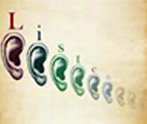Home > Listening Therapy > Hypersensitive Hearing

Sensitivity to loud noises or having over acute hearing is not registered during a conventional hearing test and is not normally considered…Dr. A Tomatis
Hypersensitive hearing in relation to Dyslexia, Dyspraxia, ADHD and Autism.
Sensitivity to loud noises or having over acute hearing is not registered during a conventional hearing test and is not normally considered a problem. Although treatments are available, these are not on the NHS as it is in other countries.
The reason for sound hypersensivity in children is found in the way in which they perceive sounds. They mainly listen with their body (skin and bones) known as bone conductive sound, rather than with their ears. They have little ability to filter out background noise and tune in to what matters.
As a result what is known as auditory defensiveness (non- listening) develops. It can be extremely difficult to cope with everyday life, such as the school room and playgrounds, shopping centres, cinemas, mechanical sounds and any unexpected loud noise. When confronted with this onslaught of sound they may burst into huge temper tantrums of frustration, maybe hoping that their own screams might mask the sounds that hurt so much. Behavioural patterns start to develop as a defence mechanism. Tuning out from communication and sound seems to be their only option.
These symptoms are self-evident for any Tomatis practioner. But the Tomatis listening assessment can verify a tremendous sensitivity to sound. The Tomatis method is interested in the relationship between bone and air conducted sound and many other parameters of sound perception which will not be addressed in a conventional hearing test.
The problem of sound sensitivity is treated by undergoing a course in Listening Therapy. Through series of listening sessions the ear is retrained and activated to work as it was designed to, increasing its efficiency and reducing the need to rely on bone conducted perception. When this occurs the child can then begin to listen. The sensitivity has decreased and listening isn’t associated with the pain.
